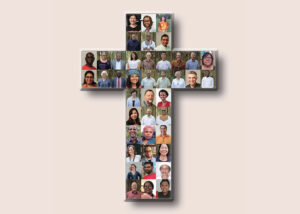In his 2003 book, One Body, One Spirit: Principles of Successful Multiracial Churches, George Yancey shares the results of a major study funded by the Lily Endowment and conducted by Michael Emerson, Karen Chai and Yancey.
The researchers discuss four distinctive types of multiracial churches. Below, I analyze these types from a Mennonite perspective.
1)“Leadership Multiracial Churches” are the result of the visions of strong charismatic leaders—whether pastors, lay leaders or both—and their unswerving commitment to creating multiracial churches. In 1998, Pastor Russell Rosser of First Baptist Church in Flushing, New York, captured something of this ethos when he wrote: “Intentional and supernaturally empowered local churches under the guidance of the Spirit of God will establish the people of God in ethnic and racial reconciliation.”
With a firm supernatural belief that their skills and gifts are directly endowed by God, and God is behind their every move, these leaders are graced to wield their great influence upon their congregants for the success of creating multiracial churches.
Mennonite perspective: This model lies at the far opposite end of the spectrum of the typical Mennonite congregational church in which a leader’s charismatic leadership tends to be regarded as a direct antithesis to communal leadership. Since congregational leadership puts more emphasis on the democracy of process than the utilitarian result, the leadership-centred model is not generally appealing to Mennonites. Yet the majority of successful multiracial churches are indebted to this model.
2)”Evangelism Multiracial Churches” set their primary and strategic goal as winning new people—immigrants, refugees, other people of colour—to Christ by hosting community outreach programs. These could include English classes, counseling, Alpha courses or food pantries. Despite their evangelical zeal to embrace all ethnicities and all different styles of worship, the theology of these churches remains innately conservative and apolitical.
As Yancey noted in One Body, One Spirit, “This model of church is more likely to oppose homosexuality than other types of multiracial churches.”
Mennonite perspective: This model is also less appreciated by the Mennonite church, in that there is still a tacit and widespread bias against both evangelism and programization, which Mennonites tend to link with colonialism and humanism.
3)”Demographic Multiracial Churches” are created according to demographic circumstances in a neighborhood and a church’s embrace of its local demography. These churches are the result of where they are located. Birthed as a natural adjustment and response to external changes, in such churches, interactions among members can be limited because no communal and consistent intentionality is demonstrated to the whole congregation. In other words, this model ends up being “performative” rather than truly, intentionally integrated.
Mennonite perspective: I have observed that almost all of the Mennonite “intercultural” churches in Canada belong to this model. They begin with the natural embrace of local diversity but remain somewhat static in terms of finding creative ways to embody equitable integration.
4) “Network Multiracial Churches” are created through the expansion of social networks. The interracial and intercultural families and friends of church members become part of the church. Through these human networks and by the power of word-of-mouth, new people are introduced to the church. The church exhibits characteristics of shareability, flexibility and hospitality to people of all ethnicities and races.
Out of the four models, Yancey says, “these Network Multiracial churches are the most likely to grow.”
Mennonite perspective: The Mennonite church has evolved not in a vacuum of culture but in ceaseless interactions with cultures near and far. Yet when it comes to a moment of evangelical encounter with strangers, a moment to declare what we have seen and heard, we, Mennonites, tend to become reticent.
This model challenges us to go beyond our generic reservedness, bravely utilizing our human networks and chiseling away to further the intercultural Kingdom of God here and now. As the words of the hymn say, “How can we be silent?”
Even though the network model emerged as most promising in this survey, what is more important to know is that these four models are not mutually exclusive. A multiracial church cannot be built on an island. It always interacts and evolves.
Any type or level of hybridization is inevitably permeable unless we are culturally blind and inflexible. For example, a demographically multiracial church can intentionally turn into an evangelism or network-based church. Why not the Mennonite church?
Joon Park serves as intentional interim co-pastor at Holyrood Mennonite Church in Edmonton.
Read more Riding the Waves of Intercultural Church columns:
The witness of heterogeneity
Revisiting intentionality
Three kinds of grace in the formation of intercultural church
Goodbye ‘model minority’
Forever hybrid








Leave a Reply
You must be logged in to post a comment.